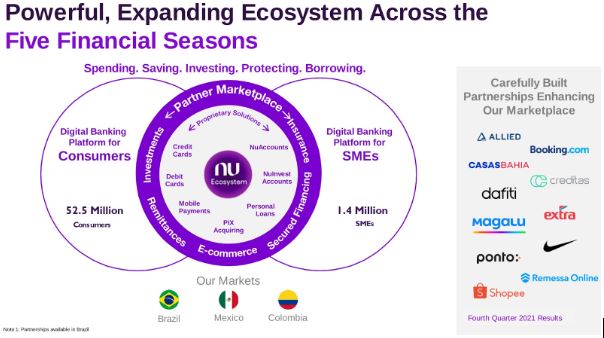Dating and customer onboarding are two peas in a pod. Both require getting to know each other and trying to make it work. Sure, the perfect customer onboarding process is all about understanding the customer’s needs and providing value, but let’s be real, that’s just like dating – you gotta give a little to get a little.
The only difference is that you usually rely on your inexperienced best friend for advice (pun intended) when it comes to dating. But when it comes to customer onboarding, you have a secret weapon – a perfectly customized onboarding playbook to save the day. So, customer onboarding process is just like dating, except this time, you’re the one calling the shots!
So, what is this customer-winning hack about playbooks in customer onboarding?
Keep reading to learn more about it!
What is a customer onboarding playbook?
A customer onboarding playbook is a set of guidelines and best practices that outlines the steps and processes that a company should follow when onboarding new customers. It typically includes information on customer communication, training, and support, as well as key metrics to track and goals to achieve.
The goal of a perfect customer onboarding playbook is to ensure that new customers have a positive experience with the company and its products or services from the very beginning. By providing clear instructions and a consistent process, a customer onboarding playbook can help to reduce confusion and frustration and increase the chances that customers will stick around and become long-term, loyal customers.
Why is customer onboarding process playbook important for customer success manager?
Onboarding playbooks provide a necessary framework for the customer onboarding process and are essential for providing a smooth and effective experience for customers, as well as for tracking progress and making data-driven decisions.
Let’s give you potential reasons why you need onboarding playbooks:
- Without a clear and consistent structure for the onboarding process, the customer experience can become disorganized and inconsistent.
- Without a playbook, it can be difficult to track progress and identify areas for improvement. Additionally, without a standardized process, the onboarding experience may differ for each customer, leading to confusion and dissatisfaction.
- Without a playbook, it can be difficult to collect meaningful data and analyze the effectiveness of the onboarding process, which can hinder the ability to make important changes and improvements.
Here’s a great story of Matt Learner, I read the other day about:
How a playbook is important to define your growth roadmap, instead of putting the gun on your Growth Marketer’s shoulder— start to learn whether your current strategy is really working or not.
The perfect Customer Success onboarding process
“Customer onboarding is most likely the most crucial stage of the customer lifestyle. As a previous CSM, I found that a poor onboarding process most often resulted in churn”- Sandra Njemo, Planhat
When done correctly, it prepares your customers for success and clearly demonstrates the value of your product. When poorly executed, it leaves customers wondering why they signed up in the first place.
in user onboarding, 90% of customers believe that companies could “do better”
A perfect customer onboarding process will
- Utilize an onboarding playbook
- Keep customers engaged
- Have an effective training process
- Create customer centric goals
- Measure success
A perfect customer onboarding process should be well-structured and tailored to the specific needs of the customer.
Effective training process helps customer
- To understand how to use the product
- Helps to create customer-centric goals
- Ensures product meeting specific needs
What you should include in a customer onboarding playbook?
A customer onboarding playbook should include several key elements to ensure a successful onboarding experience. These include:
1. A clear outline of the onboarding process:
The playbook should provide a step-by-step guide for the customer onboarding process, including the tasks and resources needed at each stage.
2. Customer-centric goals:
The playbook should include customer-centric goals that align with the customer’s specific needs, this will help to ensure that the product is meeting their needs and that they are getting the most out of it.
3. Effective training process:
The playbook should include a comprehensive training process that helps customers understand how to use the product and get the most out of it.
4. Engagement plan:
The playbook should include a plan for keeping customers engaged throughout the onboarding process, this will help to build a strong relationship and ensure that they are getting the most out of the product.
5. Measurement and evaluation:
The playbook should include a plan for measuring and evaluating the success of the onboarding process and identifying areas for improvement.
Schedule a demo with one of our experts to take a deeper dive into Churn360
Book a demo
6. Resources:
The playbook should include any resources, such as guides, videos, FAQs, that will help the customer to understand the product and how to use it.
7. Contacts:
The playbook should include a list of all the key contacts, including CSM, customer support, and technical teams, that the customer can reach out to in case of any issues.
8. Timeline:
The playbook should include a timeline of all the tasks, milestones and key dates, that the customer and CSM should be aware of during the onboarding process.
Overall, a comprehensive customer onboarding playbook should be able to guide the customer through the onboarding process, ensure they are getting the most out of the product and help the CSM to evaluate the effectiveness of the process and make necessary improvements.
Thus, to have a structured approach to onboarding is crucial for CSMs.
Check out this Onboarding Playbook structure to offer a great onboarding experience to your next dear customer!
| CUSTOMER ONBOARDING PLAYBOOK |
|---|
| KNOWLEDGE TRANSFER |
| EXPECTATION SETTING |
| VALIDATION OF OBJECTIVES |
| AGREEMENT ON SUCCESS DEFINITION |
| AGREEMENT ON KPIS |
| ACCOUNT SETUP |
| USER TRAININGS |
| GO-LIVE |
| CHANGE MANAGEMENT |
| FEEDBACK |
How to create a playbook template?
1. Define the onboarding process:
The first step is to define the overall structure of the onboarding process. This includes identifying the key milestones and tasks that need to be completed at each stage, as well as any resources that will be needed.
For example, a SaaS company may have a process that includes account setup, product training, and a customer onboarding call.
2. Set customer-centric goals:
Define customer-centric goals that align with the customer’s specific needs. This will help to ensure that the product is meeting their needs and that they are getting the most out of it.
For example, a customer-centric goal for an e-commerce company may be to help the customer set up their online store and get their first product listed within the first week.
3. Develop an effective training process:
Create a comprehensive training process that will help customers understand how to use the product and get the most out of it. This could include video tutorials, webinars, user guides, and FAQs.
For example, a SaaS company could provide a series of video tutorials and webinars to help customers understand how to use the different features of the software.
4. Create an engagement plan:
Develop a plan for keeping customers engaged throughout the onboarding process. This could include regular check-ins, personalized follow-up emails, and customer feedback surveys.
For example, a ride-hailing company could create an engagement plan that includes sending personalized follow-up emails after the first ride and encouraging customers to provide feedback.
5. Measure and evaluate the process:
Include a plan for measuring and evaluating the success of the onboarding process and identifying areas for improvement. This could include tracking key metrics, such as customer retention and product adoption, and conducting customer surveys.
For example, a subscription box company could measure the success of their onboarding process by tracking the number of customers who continue to subscribe after the first month.
6. Gather resources:
Collect any resources, such as guides, videos, FAQs, that will help the customer to understand the product and how to use it.
For example, a financial services company could provide a guide that outlines the different features of their financial planning tool and how to use them.
7. Add Contacts:
Add a list of all the key contacts, including CSM, customer support, and technical teams, that the customer can reach out to in case of any issues. This will help to ensure that the customer can quickly get the assistance they need if they have any questions or problems.
For example, a food delivery company could include a contact list that includes the customer’s CSM, customer support team, and technical support team.
Creating a customer onboarding playbook template requires a thorough understanding of the customer’s needs and the product, as well as a clear and consistent structure for the onboarding process. By following these steps, you can create a comprehensive and effective customer onboarding playbook template that will help to ensure a smooth and successful onboarding experience for your customers.
3 Perfect Customer Onboarding Process Playbook Templates
Nubank playbook

Accenture life-centric approach playbook

Hubspot onboarding playbook

Conclusion
Playbooks is the ladder for smooth onboarding, satisfied customers, and leads super performance of sales– cherish your overall job as a customer success manager.
Building a customer playbook elevates your product as well as customer experience, making it a win-win situation for customer goals & product goals altogether.
What ultimately customer onboarding playbooks brings on the table:
-
- Success, with data driven experiences.
- Clear path of success with great customer experience.
- Consistency and clear structure– resulting a repetitive success.
Looking for a tools to improve your customer onboarding and customer success? Book a demo on Churn360 and get your success metre started.


